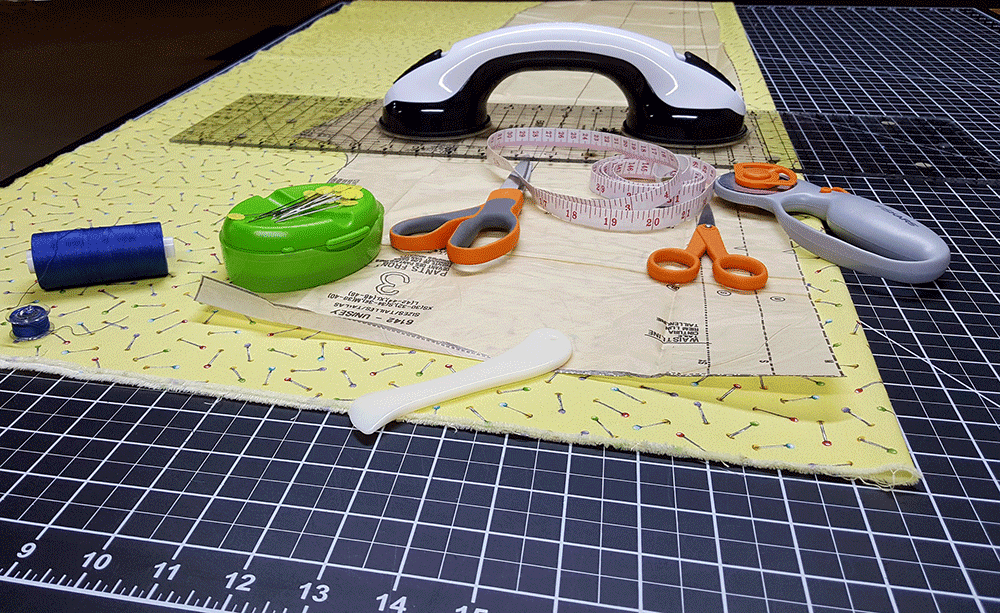
 Packing Tips
Packing TipsHow to Store Sewing Supplies
If you grew up in a craft home, you remember how important it was to organize sewing supplies. Childhood visions may have included oversized jars stuffed with buttons, stacked hatboxes overflowing with yarns and recycled cookie tins within reach of a comfortable chair, filled with needles and an assortment of colorful threads.
Recycling Cookie Tins for Storage
Cookie tins are also referred to as advertising tins and available in different sizes from small flat to tall silhouettes. They make great storage containers for sewing supplies. Before using them, hand wash the tins to remove any food particles and dry the inside completely to avoid unwanted moisture.
Beware of Moisture in Your Sewing Supplies
If you peek into a crafter's room, you'll find colorful threads and yarns ranging from cotton, polyester, wool, and silk. Each with a variety of weights, thickness, and strength. The storage challenge is figuring out how to store these materials without losing its primary characteristics -- softness and durability.
Not many individuals are aware of the moisture amounts these materials contain. Besides age, the lack of humidity (moisture) is usually responsible for threads or yarns breaking when pulled and losing its color. Here are some self-storage tips to keep craft supplies in good condition.
If you're a devoted crafter, you have a secluded room with at least one wall stacked from floor to ceiling with boxes, crates, and containers. Two obvious problems come to thought; first, the frustration of not having enough room to work on sewing projects. Second, the lack of organization results in not knowing what is where or even the condition of the supplies.
Separate Sewing Supplies into Smaller Containers
Why not keep the smaller containers in the sewing room and move the larger containers into a climate-controlled self-storage for safekeeping. Here are some organizing inspiration and storage solutions. These containers are stackable, fit seamlessly into a bigger container, allow for labeling, and easy access.
- Circular flat cookie tins are perfect for sorting bobbins, spools, and embroidery threads.
- Create your arrangement by inserting cardboard dividers to fit.
- Taller tins make a great catch-all for quilting squares and fabric remnants.
- Retail compartment containers offer more selected sorting for buttons, hooks, and snaps.
- Larger utility compartments work for storing scissors, measuring tapes, seam rippers, straight and circular needles, and threading tools.
Sunlight and Heat Will Damage Sewing Supplies
Avoid direct sunlight since heat triggers dry environments causing threads to dry out, making them brittle and susceptible to breakage. Threads stored in the attic or forgotten rooms will lose moisture and physically breakdown. Believe it not; sometimes, you can revive old thread by letting it reach room temperature.
Depending on the age, adding a quick blast, not soaking of water may help to regain its moisture. It's a modified method the textile industry uses to restore moisture into the fiber to improve the material's quality and performance.
Protecting Fiber Quality During Long Term Storage
Fiber materials require air ventilation, controlled humidity, and no direct light to help retain its suppleness and color. All three elements are keys to proper material storage. Individual yarns and fabrics like wool and silk are extremely susceptible to dry air and require consistent humidity levels.
Man-made fibers (polyester) are resilient to low or moderation humidity, but in a dry environment, it's prone to static. Environments with frequently changing temperance like attics, basements, and garages can cause materials to smell musty. Word of caution, smelly odors are very appealing to pests.
Organizing Fabric, Yarm, and Thread to Make Crafting Easier
Organize by fabric, yarn, and thread groups and colors. Select opened ended containers for yarn so you can visually see the colors for easy retrieval. Choose a larger container that accommodates the material groupings. Freestanding shelves, or storage towers are great options because they lift supplies off the floor for added ventilation.
- Yarn has particular holding preferences for skeins; fabric or woven bins or canvas or mesh bags.
- Fabrics can be kept on rolled bolts or layered in clear plastic containers.
- Tiered and clear plastic containers offer visibility of storing supplies.
Climate Control Helps Crafting Supplies Last Longer
Besides removing the clutter from home, self-storage units help to retain the function and quality of craft supplies. Another benefit is proper humidity control that regulates air moisture and discourages the build-up of dust, which is known to break down delicate fibers.
Rest assured, even in humid regions or seasonal temperature changes the inside air humidity remains consistent, creating a thread and yarn haven.
Store Your Sewing Supplies Safely
Do a quick inspection before moving boxes or supplies to storage. Boxes that have lost their form need to be replaced. They pose potential problem of collapsing, displacing, or damaging the other boxes. It's a good idea to clean any plastic containers to make sure you have no hitchhikers.
Inventory should be taken so you know what's in each box and container. Items that can't be salvaged or in poor condition should be removed from storage -- but don't toss them, remnants always come in handy.
By following a few simple storage rules, the potential damages to sewing supplies can be significantly reduced. If you are storing machines, keep them in their cases and cover with a dust cover.
We're Your Storage Solution!
Storage Rentals of America is your convenient self-storage solution. So come into our office or give our storage experts a call at 1-800-457-5678. Our call center is available 7 days a week and can help determine which storage unit size best fits your storage needs.



